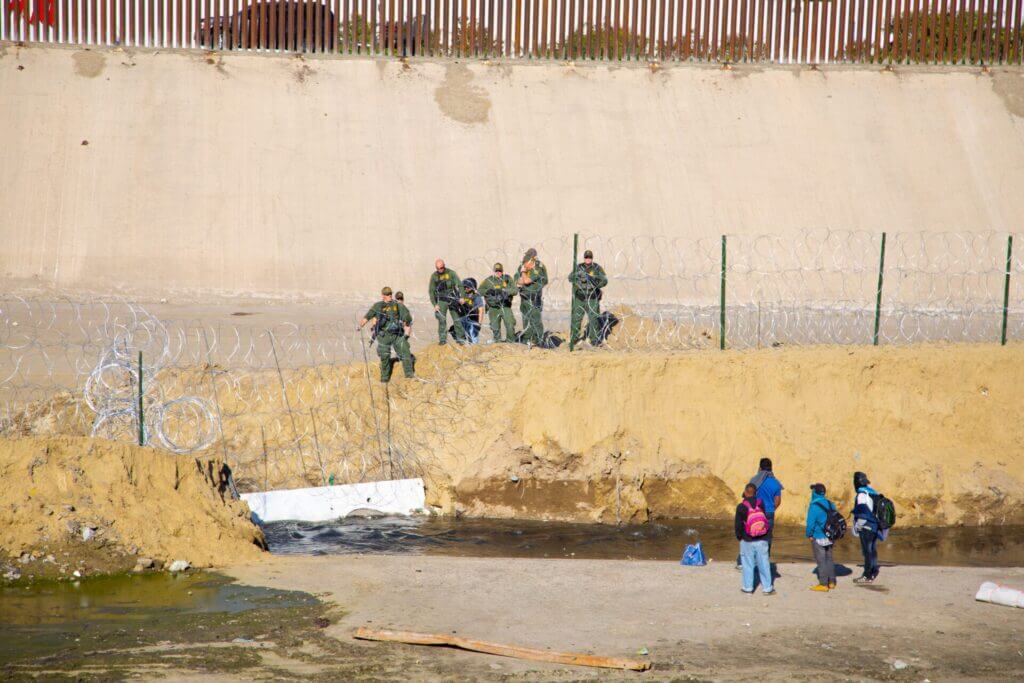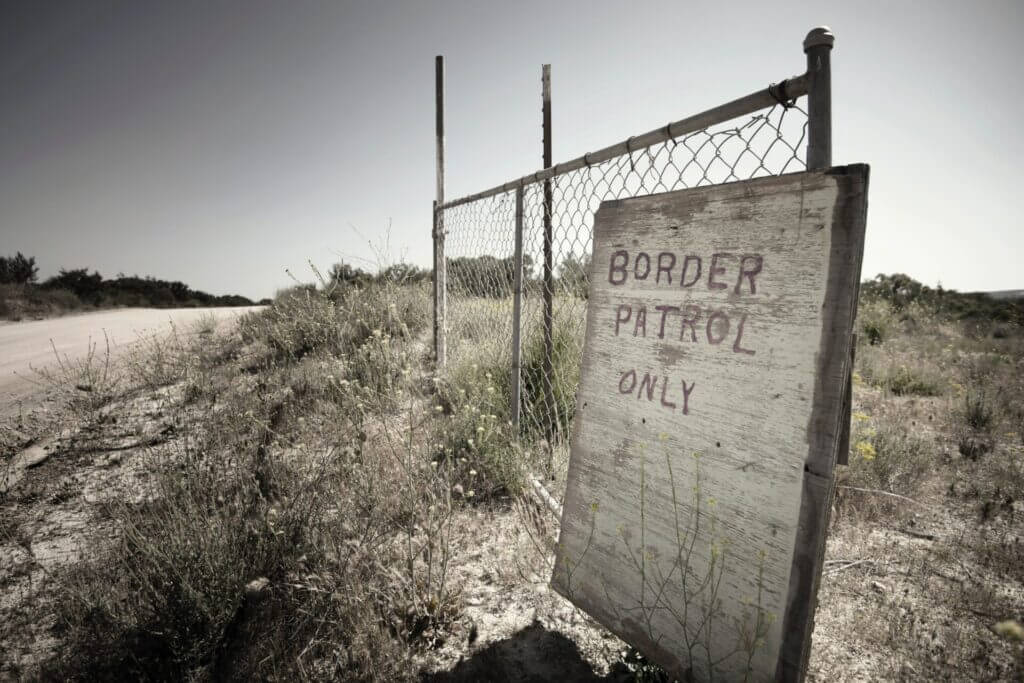Title 42 is finally over and we are seeing Title 8 begins to be implemented in its place. We have already discussed the particularities of this immigration measure which, although it is more lax than its predecessor in some aspects, is still extremely harsh on those who cross the border illegally.
Now, Title 42 having passed, what will Biden’s new policy on the southern border of the United States be? Our experienced attorneys at Jaskot Law will answer some of the most common questions.
Is there an immigration crisis on the southern border of the United States?
In the face of multiple threats from senators and Republican Party leaders, many people are wondering if there is an immigration crisis at the southern border of the United States with the end of Title 42.
It must be said that, as of today, the number of crossings suggests that a border crisis has not yet materialized, at least by the Republicans’ own definition. However, there remains the possibility of a future upturn in crossovers. For now, the crisis at the southern border of the United States is primarily humanitarian and is based on the overcrowding of detainees and the backlog of asylum claims at the U.S. southern border.

In this regard, the Biden administration seeks to expedite the application process andrelease some of these migrants into the United States without setting a date to appear in deportation proceedings, with the goal of relieving pressure on these facilities. However, a court ruling currently prevents this.
For their part, many of the migrants waiting in Mexico try to obtain appointments to legally enter the United States through the CBP One application, administered by U.S. immigration authorities. However, only 1,000 appointments are offered per day and not all migrants have access to the application due to lack of smartphones or the language barrier.
The current conditions at the border pose significant challenges for both border authorities and migrants as they seek to find solutions to manage the situation safely and fairly.
What measures have been implemented to address immigration at the southern border of the United States?
The Biden administration has implemented several specific measures to address migration issues, particularly with the waves coming from the southern border of the United States. Recall once again that these measures have focused on reversing or modifying some policies implemented during the Trump administration, attempting to address immigration issues from a more humanitarian approach.
The following are some of the key measures:
- End of Title 42: The Biden administration has announced the gradual end of the Title 42 policy, which allowed for the expedited removal of migrants, especially at the southern border of the United States, due to public health concerns during the pandemic. This change is intended to allow for greater processing of asylum applications and to provide a more humanitarian response to migrants.
- MPP Program Review: Management has reviewed the MPP program (Migrant Protection Protocols), also known as the “Remain in Mexico” policy, which required asylum seekers to wait in Mexico while their cases were being processed in U.S. courts. Under the new administration, some applicants have been allowed to wait in the United States while their applications are being resolved.
- Protecting Dreamers: President Biden has urged Congress to pass legislation that would provide permanent legal status to Dreamers, young immigrants who came to the United States as children and who benefit from the Deferred Action for Childhood Arrivals (DACA) program. This measure seeks to provide stability to these individuals and protect them from deportation.
- Strengthening resources at the border: The administration has allocated more resources to improve border detention facilities, particularly along the southern border of the United States. In addition, they seek to increase the processing capacity of asylum applications and reduce waiting times. On the other hand, the presence of medical and humanitarian support personnel has been increased to provide adequate care to migrants.

However, it should be noted that while the general approach has been to promote a more humanitarian migration policy focused on the protection of migrants’ rights, the new Title 8 is not much more lax than its predecessor in the removal and treatment of migrants who illegally cross the southern border of the United States..
While there was some progress on immigration policy, especially compared to the Trump era, the Biden administration has a lot of unfinished business, including the current situation of the asylum seekers at the southern border of the United States.
If you are one of the many migrants seeking asylum in the United States, at Jaskot Law we can help you. Contact us at +1 (410) 235-6868 or send an email to [email protected].
What steps are being taken to expedite asylum application processes at the U.S. southern border?
As the humanitarian crisis continues at the southern border of the United States, the Biden administration is taking concrete steps to streamline asylum application processes and ensure a faster and more efficient response to those seeking protection.
Some of the most important measures are:
- Increased resources and personnel: More resources and personnel have been allocated to strengthen asylum processing capacity at the southern border of the United States. This involves hiring more specialized staff, such as immigration judges and asylum officers, to speed up processing and reduce waiting times.
- Implementation of pilot programs: Pilot programs are underway to test new approaches to processing asylum applications. These programs seek to identify and apply best practices that streamline processes without compromising the integrity of the assessments. For example, rapid case review systems are being implemented at certain points of entry, where the most urgent asylum claims are prioritized and a preliminary review is conducted to determine eligibility.
- Collaboration with organizations and countries of origin: Cooperation with international organizations and countries of origin is essential to expedite the asylum application process. Ties and communication are being strengthened with agencies such as the United Nations High Commissioner for Refugees (UNHCR) and non-governmental organizations that provide support and advice to asylum seekers. In addition, collaboration agreements are being sought with the countries of origin to facilitate obtaining the necessary documents and evidence to support the applications.
- Use of technology and digital resources: The use of technology and digital resources is being promoted to streamline the asylum application process. This includes the implementation of online systems for submitting and following up on applications, which reduces the need for face-to-face procedures and expedites the collection of relevant information and documents.
It should be noted that these measures, while implemented to streamline the asylum application process at the southern border of the United States, need to be refined and many of them are currently under evaluation.
Without going any further, the use of the application CBP One as the only way to request an appointment with immigration authorities. The asylum process has had multiple problems, such as a lack of slots in the face of high demand, which has led to the separation of multiple families at the southern border of the United States.
For all these reasons, the help of an experienced immigration attorney is indispensable when initiating the process to enter the country legally. At Jaskot Law we can help you find the immigration benefit that best fits your case.
Contact us today by calling +1 (410) 235-6868 or emailing [email protected].
Which groups have the highest number of approved asylum cases?
Knowing the problems and delays with asylum applications at the southern border of the United States, anyone would want to make sure their application is approved. Now, which groups have the highest number of approved asylum cases?
While there is fairness in reviewing asylum applications, USCIS prioritizes certain groups that come from certain countries in conflict or belong to persecuted minorities in their countries of origin. In this sense, there are certain groups that show a higher percentage of approved asylum cases, while we observe others in which the number of rejected applicants is higher.

According to experts, most of the rejections are due to applicants’ failure to meet credible fear requirements, i.e., the low approval rate of asylum cases in some groups is unrelated to the nationality of the applicants.
Thus we see that applicants from Venezuela and Cuba, who often flee their country due to political persecution, have a higher number of approved asylum cases than those from Mexico, Honduras and Guatemala, where the vast majority are fleeing as a result of high crime rates, which does not qualify as a credible cause for fear.
Therefore, it is important to seek the assistance of an experienced immigration attorney who can analyze whether or not your case applies to the credible fear necessary to apply for asylum in the United States.
At Jaskot LawOur lawyers can help you to successfully complete your asylum application. Contact us today by calling +1 (410) 235-6868 or emailing [email protected].
Sources
USCIS – Affirmative asylum processing.
Frequently Asked Questions
What will be Biden’s new policy on the southern border of the United States?
Biden’s new policy on the southern border of the United States is based on the implementation of Title 8 as a replacement for Title 42. Although it is more lax compared to its predecessor in some respects, it is still strict with those who cross the border illegally.
Is there an immigration crisis on the southern border of the United States?
Currently, the number of crossings suggests that an immigration crisis has not materialized at the southern border of the United States, at least as defined by Republicans. However, there is a possibility of a future upturn in crossings. Currently, the crisis at the southern border is primarily humanitarian, with an excess of detainees and a backlog of asylum applications.
What measures have been implemented to address immigration at the southern border of the United States?
The Biden administration has implemented several measures to address immigration issues at the southern border of the United States. Some of these measures include phasing out Title 42, revising the MPP program, protecting Dreamers, and strengthening resources at the border, such as improved detention facilities and increased medical and humanitarian personnel.
What steps are being taken to expedite asylum application processes at the southern border of the United States?
To streamline the asylum application process at the southern border of the United States, the Biden administration has taken several steps. These include increasing resources and staff, implementing pilot programs to test new approaches to processing, collaborating with organizations and countries of origin, and using technology and digital resources to facilitate the submission and tracking of applications.
Which groups have the highest number of approved asylum cases?
Although there is no specific preference by nationality in the review of asylum applications, some groups show a higher percentage of approved cases. Applicants from Venezuela and Cuba, often fleeing political persecution, have a higher number of approved asylum cases. On the other hand, applicants from Mexico, Honduras and Guatemala, who flee due to high crime rates, face a lower approval rate. It is important to seek the assistance of an experienced immigration attorney to evaluate the eligibility of each case.
Juan Berkowsky is a professional writer specialized in communications for social networks and digital media. His mission is to empower people through knowledge and access to information. He work with honesty and dedication to assist all those seeking to navigate the sometimes tough U.S. immigration process.


